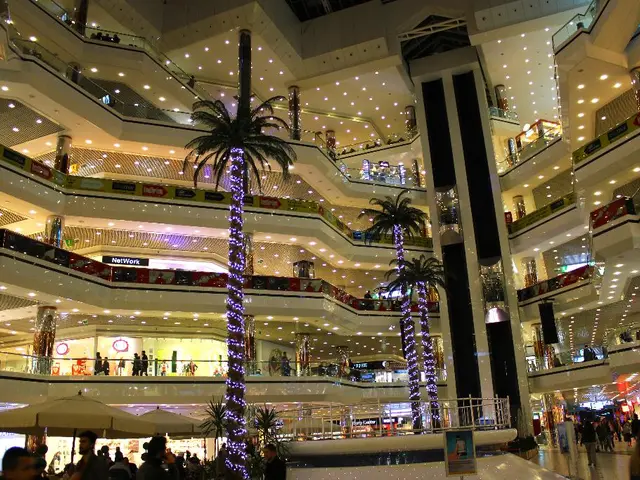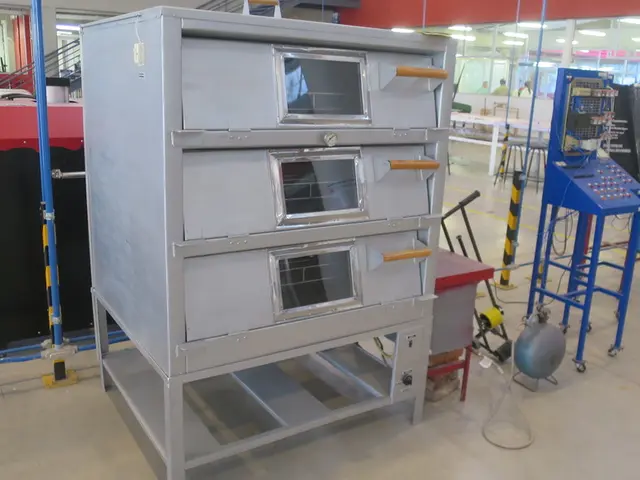Architectural responses to climate crisis and proposed solutions showcased during the Biennale - Witness the impact of climate change and proposed solutions at the architecture biennale.
Exploring the Future of Urban Climates: The German Pavilion at Venice's Biennale Emphasizes Sensory Experiences
Visitors to the 19th Architecture Biennale in Venice can anticipate an immersive journey into the future of urban climates. The German Pavilion, spearheaded by a team of architects and urban planning experts, invites attendees to participate in a firsthand stress test, allowing them to experience the tangible implications of climate change on cities.
The innovative curatorial team, comprised of architect Nicola Borgmann, professor Elisabeth Endres, landscape architect Gabriele Liefer, and architect Daniele Santucci, aim to underscore the significance of prioritizing climate-adapted urban planning. Their exhibition will explore how buildings and urban infrastructure can affect temperature reduction in cities, with a focus on the "Stress" and "Destress" sections.
Cardiologist Burkert Pieske from the University of Rostock highlighted the unique susceptibility of vulnerable individuals, including the elderly, pregnant women, children, and socially disadvantaged populations, to city heat during a press conference. By examining the health consequences of climate change, particularly for cardiovascular disease patients, his perspective adds a crucial human element to the discussions surrounding urban sustainability.
As the 19th Architecture Biennale in Venice is scheduled for May 10 - November 23, 2025, the German Pavilion's official opening takes place on May 9. In their exploration of urban climate resilience, the curatorial team draws upon modern strategies, such as integrating nature, sustainable materials, green infrastructure, climate-resilient design, active transportation, community engagement, and innovative construction techniques.
These strategies aid in mitigating the physical and psychological impacts of climate change on urban environments and can contribute to the creation of more sustainable, equitable, and adaptive urban spaces.
Enrichment Insights:
- Integration with Nature:
- Biophilic Design, such as incorporating natural elements into buildings and public spaces, can reduce the urban heat island effect and improve air quality.
- Examples include the Paimio Sanatorium in Finland, which integrated numerous natural elements into its therapeutic design.
- Sustainable Materials and Construction:
- Utilizing locally sourced materials minimizes environmental impact and supports local economies, ensuring durability.
- This approach was employed in the design of Paimio Sanatorium.
- Green Infrastructure:
- Green spaces, trees, and landscaping can reduce the urban heat island effect and improve air quality.
- Ideas such as "green streets" and "green infrastructure" in urban planning highlight the importance of vegetation and green spaces.
- Climate-Resilient Design:
- Building adaptations like shading, insulation, and smart ventilation systems can help mitigate extreme temperatures and improve indoor air quality.
- Active Transportation and Mixed-Use Development:
- Increased density, mixed-use development, and transit-oriented design can reduce dependency on personal vehicles, decreasing greenhouse gas emissions and improving air quality.
- Community Engagement and Social Interaction:
- Designing communal areas that promote interaction and relaxation can positively impact mental health.
- Paimio Sanatorium's inclusion of lounges, dining halls, and terraces exemplified the infusion of natural light and outdoor connection to reinforce the therapeutic environment.
- Innovative Construction Techniques:
- Modern materials and prefabricated elements can help expedite construction, ensuring consistency in quality.
- Participatory Development of Local Climate Action Plans:
- Engaging the community in the development of local climate action plans ensures that mitigation strategies are tailored to specific needs and vulnerabilities.
- The European Union has shown interest in supporting the innovative strategies presented at the German Pavilion during the biennale, recognizing the importance of climate-adapted urban planning in mitigating the effects of climate change across its member states.
- Architect Nicola Borgmann, one of the curators for the German Pavilion, emphasized the significance of including the elderly in urban planning, stating that their needs should be considered when designing cities that can withstand climate stress.
- The biennale's focus on climate-adapted urban planning and its impact on public health has inspired a collaboration between the German Pavilion team and the International Union of Architects (UIA) to host a biennale-themed series of workshops aimed at addressing climate change and promoting sustainable urban development, with a particular focus on the elderly population.








